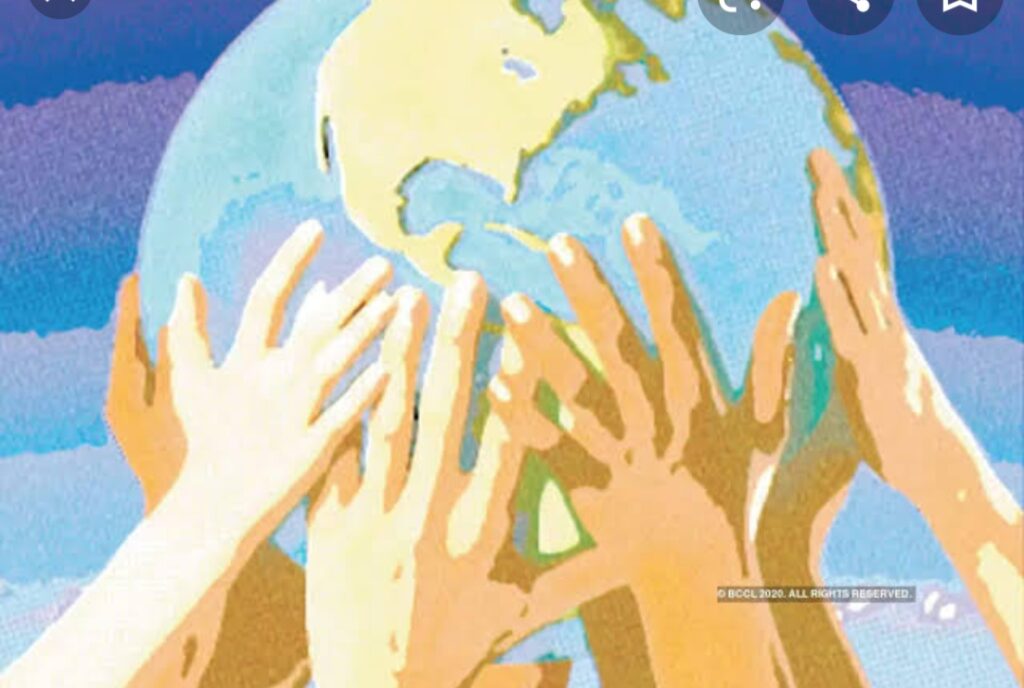Climate change will always be a topic of priority until we as a human society will not take immediate and constant efforts to Scale down its future impact and vulnerabilities .
Though, it’s a worldwide problem, but unfortunately; India, U.S.and china are the three countries standing upfront as the highest carbon dioxide emissions countries worldwide. Thus, there is a need to peep into these country’s scenario and condition through the eyes of climate change.
Let’s enhance our knowledge about climate change vulnerabilities particularly in India. India is the 7th most affected country by the impact of climate change globally, above that it is the 3 rd highest carbon dioxide emission country with 2.65 GT of CO2 emission. Climate change is a by-product of luxurious lifestyle and developing economy of a country, every individual in a country is contributing it’s part in co 2 emissions as a result of their conduct of economic activity, thus controlling climate change also becomes a political topic for all countries. Developing country like India needs to be more conscious and alert in its development , the country needs to develop in all constraints keeping in mind the control of climate change. Country like India where 290 million people are below poverty line and are directly threatened to the devastating effects of climate change, it really creates a condition that need an immediate action by government and citizens too.


The average temperature have increased in India by 0.6 ° celcius between 1901 -10 and 2009 – 18. Annually the rise may seem low but eventually this can be more devastating and alarming in its effects for India. The country is heating up and becoming dry, experts have concluded that Himalayas have experienced rise in temperature by around 1.3 °, such rise in temperature can meltdown the snow on Himalayan mountains and can result in unexpected rise in water level of connected river bodies. It’s not just Himalayas, The Great Indian Ocean have also seen a rise in sea temperature by 1°Celsius during 1951 – 2015, which can affect the June September monsoon ( farmers are dependent on this season ). Also there may be chances of heavy rainfall in central India resulting in floods. Adding up to the issue, the official climate reports have seen a rise in sea level surrounding India, which can make Sea storms more catastrophic. India can face a lot of problems like floods, stronger cyclones
unever monsoon rains, hotter days, droughts as a result of climate change due to collective and constant human action against climate’s health. It will not just hamper the climate disaster but it will also add upto the lot of economic and sustainability problems in the country.
The groups of diversity which is most likely to be affected severely by the effects of climate change are Farmers and labour workers. The monsoon and particular temperature is necessary for a good crop produce, the income of farmers is directly dependent on their produce which could bring down the income of farmer eventually affecting the overall economic income, poor farmers with nill infrastructure and irrigation facilities in India are worsened to be affected. Including this, the labourers workers working in construction and industrial sites can face more grievances, eventually affecting the overall productivity of the industry, According to the International Labour Organization, the loss in productivity of 2030 because of heat stress could be equivalent of India losing 34 million full time jobs. A recent government study concluded that in north east India, Assam will be most vulnerable to climate change while Sikkim would be the least. While cities like Mumbai and Delhi more most threatened to climate change’s affect as the majority of population lives in slum.
Discussing issues is helpful for a better solution, If india is facing climate change vulnerabilities, it is also trying to bring up some solutions to reduce its impact. Recently, India has tied patnership with U.S in the presidency of Joe Biden, The aim of this partnership “India – U.S. climate and clean energy Agenda 2030 patnership” is to a scale up innovative clean technologies needed to decarbonise industry, transportation, power; build capacity to measure and control the impacts of climate change and mobilise funds to promote and establish clean energy alternate, It also aims to seek 40 % of power generation from non fossil fuels By 2030.This patnership is a great initiative for climate change issues. Although the recent Covid lockdown have done good to nature, it reduced pollution to some level, the nature healed to a level due to lockdown, but it’s not just governments that can reduce the impact of climate change, we as a citizens and part of nature needs to be well educated about our nature and climate’s health, and should focus to condense the habits that are destructive for nature and promote those that are good for the same like rainwater harvesting, use of paper bags, afforestation, use of public transport, and so on. “Don’t become nature’s enemy, become it’s friend and never forget to strengthen your partnership and friendship with nature”.


